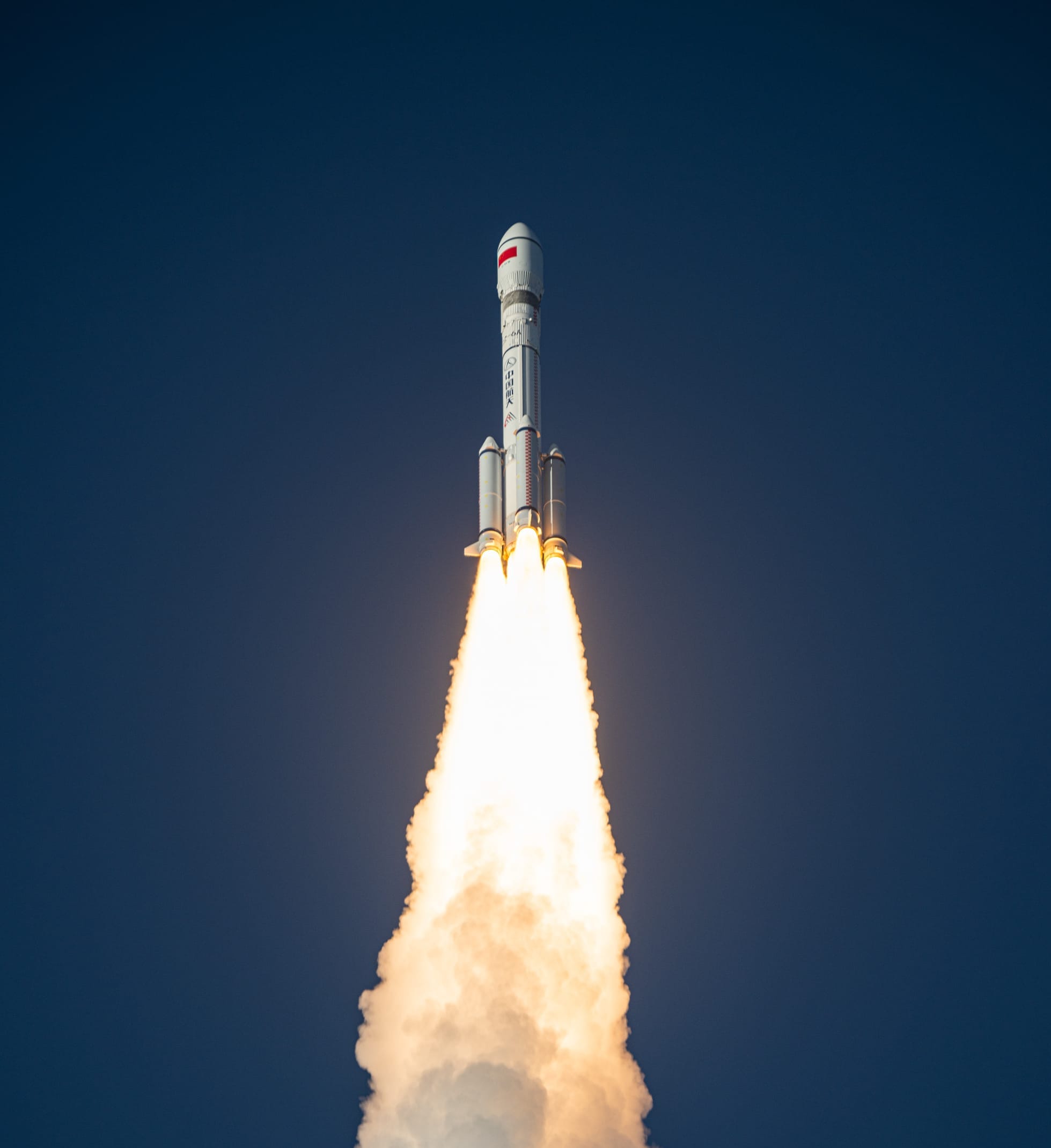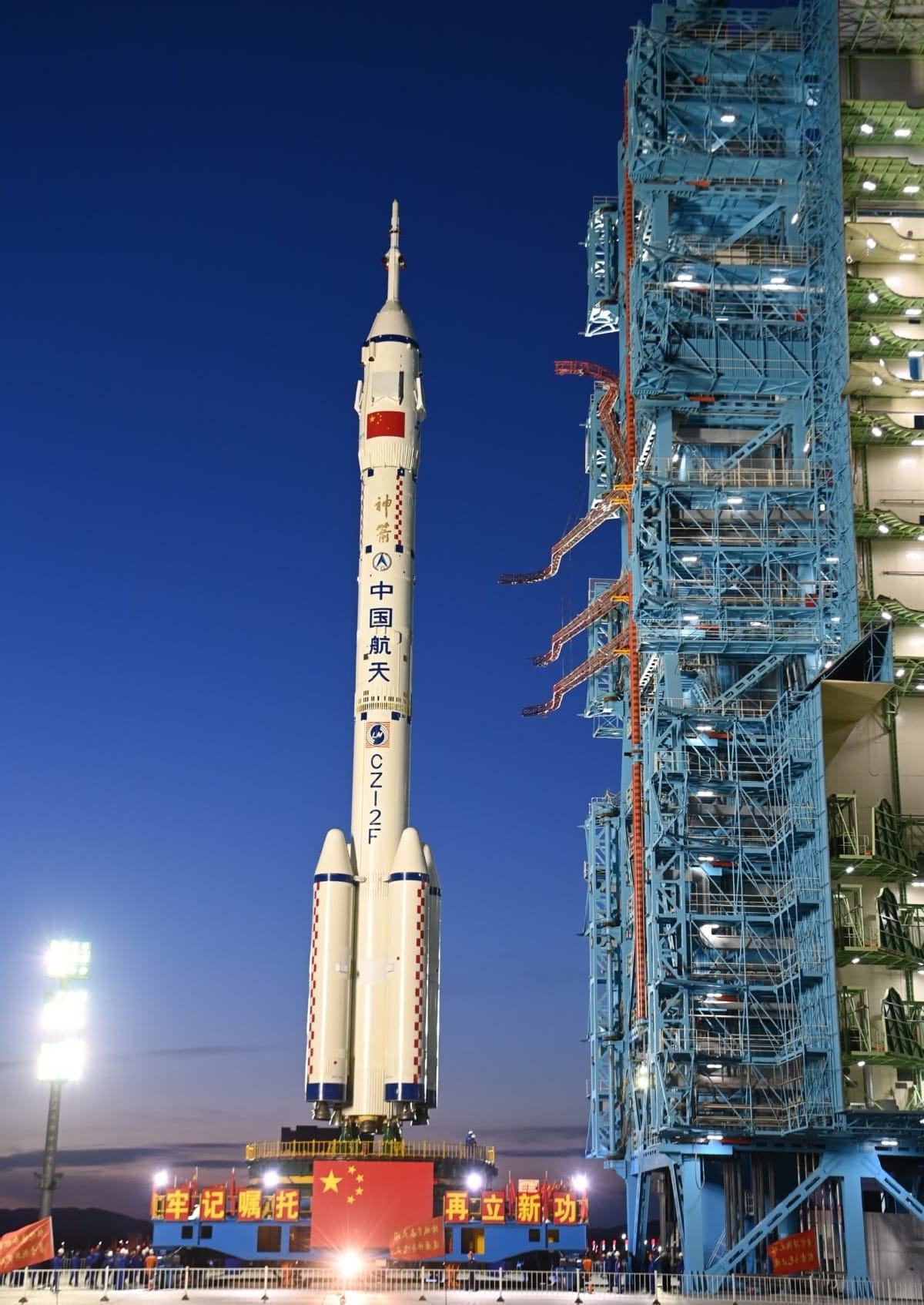Table of Contents
Welcome back to Weekly Dose of Space! This week once again had five launches taking place, with one on a suborbital mission. News from the week has China preparing for its latest crewed mission, concerns about the International Space Station, and the world's first satellite network to utilize a distant retrograde orbit. As always, we'll also look ahead to what the worldwide launch schedule might look like next week.
Launches This Week
April 13th - Falcon 9 with Starlink Group 12-17
Twenty-one Starlink satellites launched from Launch Complex 39A, in Florida, atop of a Falcon 9 heading to low Earth orbit. Booster B1083 supported this launch for its tenth launch, with a landing downrange on the drone ship 'A Shortfall Of Gravitas'.

April 14th - Falcon 9 with Starlink Group 6-73
Twenty-seven more Starlink satellites were launched by a Falcon 9 to low Earth orbit from Space Launch Complex 40, in Florida. Supporting this launch was booster B1067, for its twenty-seventh launch along with a landing onboard the drone ship 'Just Read The Instructions' downrange.

April 14th - New Shepard for NS-31
Blue Origin's eleventh crewed New Shepard mission launched from its West Texas launch site for an eleven-minute suborbital flight, carrying Katy Perry, Gayle King, Lauren Sánchez, Kerianne Flynn, Aisha Bowe, and Amanda Nguyễn. Crew capsule RSS Kármán line carried the crew while NS-5 propelled the combined vehicle, for its third flight.
Higher res version. pic.twitter.com/5TCBLIU9Ay
— Dave Limp (@davill) April 14, 2025
New Shepard booster NS-5 landing in West Texas for the NS-31 mission, via Dave Limp on Twitter.
April 16th - Minotaur IV with NROL-174
A Minotaur IV launched from Space Launch Complex 8, in California, carrying classified payloads into Earth orbit for the U.S. National Reconnaissance Office.
On April 16th, 2025, a Northrop Grumman Corporation Minotaur IV rocket launched the NROL-174 mission for the National Reconnaissance Office. The launch took place from SLC 8 at Vandenberg Space Force Base Video credit: Staff Sgt. Joshua LeRoi, United States Space Force, Vandenberg Space Force Base
— NASASpaceflight.com (@nasaspaceflight.com) 2025-04-17T20:04:35.183Z
Minotaur IV lifting off from Space Launch Complex 8 for NROL-174, via NASASPaceflight on Bluesky.
April 18th - Long March 6A with Shiyan-27 01~06
A Long March 6A blasted off from Launch Complex 9A at the Taiyuan Satellite Launch Center carrying Shiyan-27 01/02/03/04/05/06 into a sun-synchronous orbit. The six satellites are planned to test space environment monitoring (called space domain awareness in the U.S.) technologies.

In Other Space News
Shenzhou-20 mission prepares for liftoff

In preparation for the launch of the Shenzhou-20 crewed mission to China's Tiangong Space Station, the Long March 2F/G rocket with the Shenzhou spacecraft on top rolled out to its launch pad, on April 16th, at the Jiuquan Satellite Launch Center. As is standard for Chinese crewed missions, the crew is not currently known and will be announced the day before launch at the earliest.
Waiting for the new crew are Shenzhou-19’s Cai Xuzhe, Song Lingdong, and Wang Haoze. Shenzhou-19’s taikonaut trio has been onboard the station since October 30th 2024, almost six months ago, and is expected to return to Earth before the end of the month.
A launch date has not been announced for the mission, with several days in consideration, but a launch is likely on April 24th. In support of the launch, the Tiangong Space Station has performed maneuvers to adjust its position and orbit to allow the Shenzhou-20 spacecraft to catch up effectively.
Major Chinese broadcaster CGTN has typically livestreamed its English-language launch coverage on its YouTube channel.
NASA concerned about ISS condition
NASA's Aerospace Safety Advisory Panel is reportedly concerned about the condition of the International Space Station, saying it has entered its riskiest period in its history. The primary concerns of the panel are leaks from the Russian segment, deorbit preparations, and a less spare parts onboard for critical systems.
One of the panels' priority items to understand is deorbit plans should the space station need to be brought out of orbit earlier than 2030. The current plan is to have a SpaceX-made U.S. Deorbit vehicle on standby from 2028 with a launch in 2029, before deorbiting the station after a year docked. However, should the station need to be abandoned before 2029, concerns about where the station could fall are major.
The item of highest concern is the air leaks from the Russian segment, which began back in 2019. So far, the cause of the leaks has not been found, with the risks from the leaks mitigated while the source is searched for. NASA and Roscosmos are expected to meet in the coming months to discuss how best to mitigate the risk posed.
Additionally, with delays to Northrop Grumman's NG-22 resupply mission and the first flight of Sierra Space's Dream Chaser resupply vehicle, spare parts for critical systems like life support are slowly depleting. Currently, SpaceX's Cargo Dragon V2 spacecraft is the sole vehicle resupplying the U.S. segment, but with greater space given to crew supplies.
China deploys first DRO network

China's Technology and Engineering Center for Space Utilization and Innovation Academy for Microsatellites, both under the Chinese Academy of Sciences, announced on April 16th that it had performed tests to verify its Distant Retrograde Orbit Exploration network. Notably, becoming the first to do so in a distant retrograde orbit (DRO).
Tests performed with the network included a K-band microwave measurement and communication link between each of the satellites and the ground were performed at a distance of 1.17 million kilometers, as well as utilizing three hours of in-orbit inter-satellite measurement data to determine their orbit at a precision level that would typically require two days of ground-based tracking.
Three satellites make up the network: DRO-A in a lunar distant retrograde orbit, DRO-B in an Earth-Moon resonance orbit, and DRO-L in a sun-synchronous orbit around Earth. The first satellite, DRO-L, was launched in February 2024, while DRO-A and DRO-B were launched a month later and headed out to the Moon as a single combined spacecraft, before separating in August.
Speaking on the advantage of the network in a distant retrograde orbit, researcher at the Chinese Academy of Sciences and Chief Architect of the program at the Technology and Engineering Center for Space Utilization Wang Wenbin stated:
"DRO's unique position allows spacecraft to enter Earth-Moon space with minimal energy expenditure while maintaining stable positioning and full-domain accessibility," — "This three-satellite system lays crucial infrastructure for maintaining continuous human activities in the Earth-Moon sphere," — "The constellation provides essential navigation, communication and logistical support — much like building harbors and supply depots along new maritime routes during the Age of Exploration."
What to Expect Next Week
April 20th - Falcon 9 with NROL-145
A Falcon 9 is expected to launch the tenth batch of Starshield satellites, the military version of Starlink, from Space Launch Complex 4E.
April 21st - Falcon 9 with CRS-32
SpaceX is planning to perform its thirty-second International Space Station resupply mission, utilizing a Cargo Dragon V2 spacecraft that will be launched atop of a Falcon 9 from Launch Complex 39A.
April 22nd - Falcon 9 with Bandwagon-3
Falcon 9's third dedicated mid-inclination orbit small satellite rideshare mission is planning to launch from Space Launch Complex 40.
April 22nd - Long March 8 with Qianfan satellites
A Long March 8 may launch from the Wenchang Commercial Space Launch Sites' Commercial Launch Pad 1 to a polar orbit carrying the sixth batch of eighteen Qianfan satellites, for the internet providing mega-constellation.
April 24th - Long March 2F/G for Shenzhou-20
A Long March 2F/G is preparing to launch from the Jiuquan Satellite Launch Center with a Shenzhou spacecraft with three taikonauts onboard for the Shenzhou-20 mission to the Tiangong Space Station.
April 25th -Falcon 9 with Starlink Group 6-74
A batch of Starlink satellites are planning to launch from Space Launch Complex 40 to low Earth orbit atop of a Falcon 9.
April 25th - Falcon 9 with Starlink Group 11-9
Another batch of Starlink satellites is planning to launch from Space Launch Complex 4E to low Earth orbit atop a Falcon 9.







